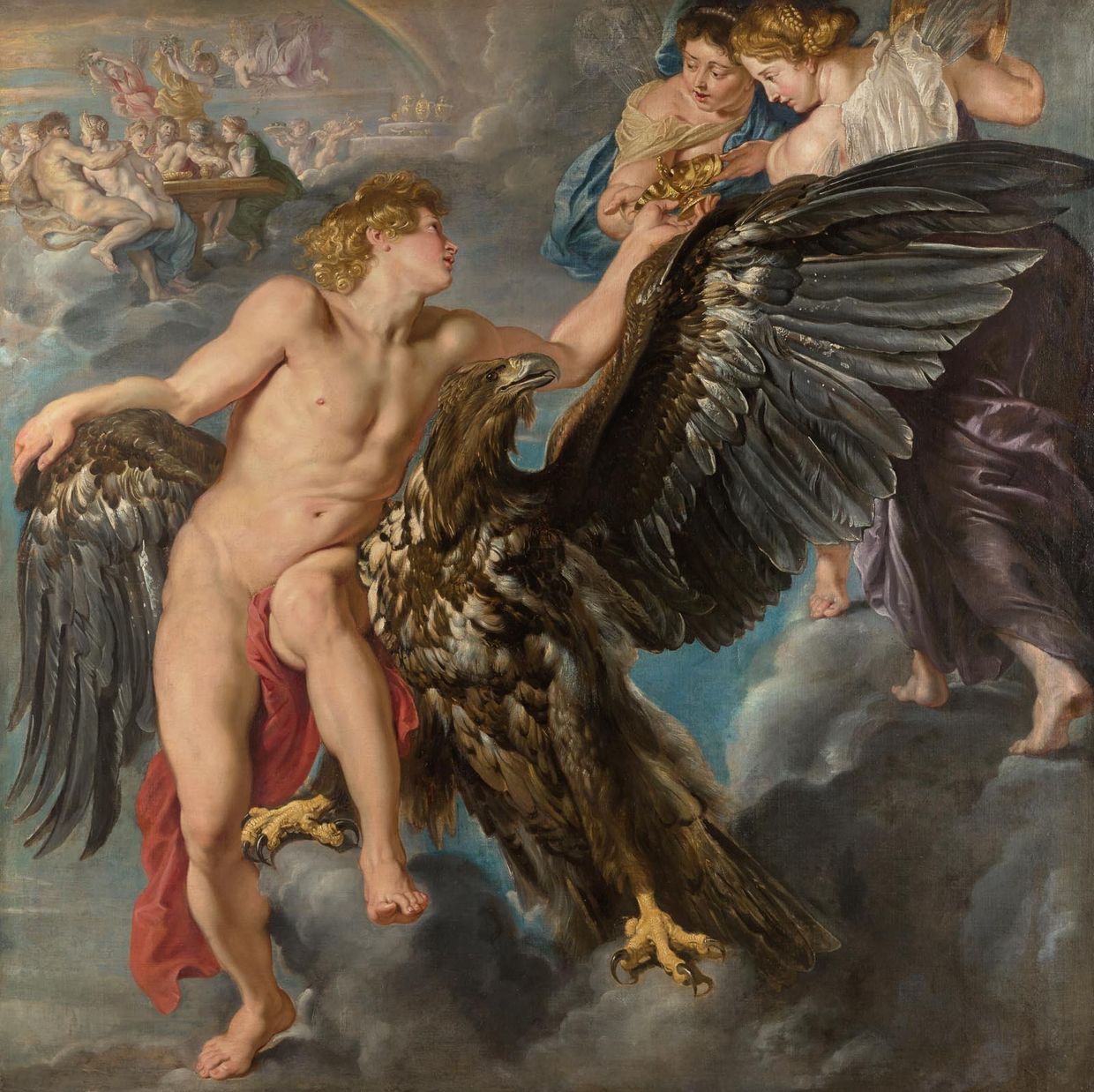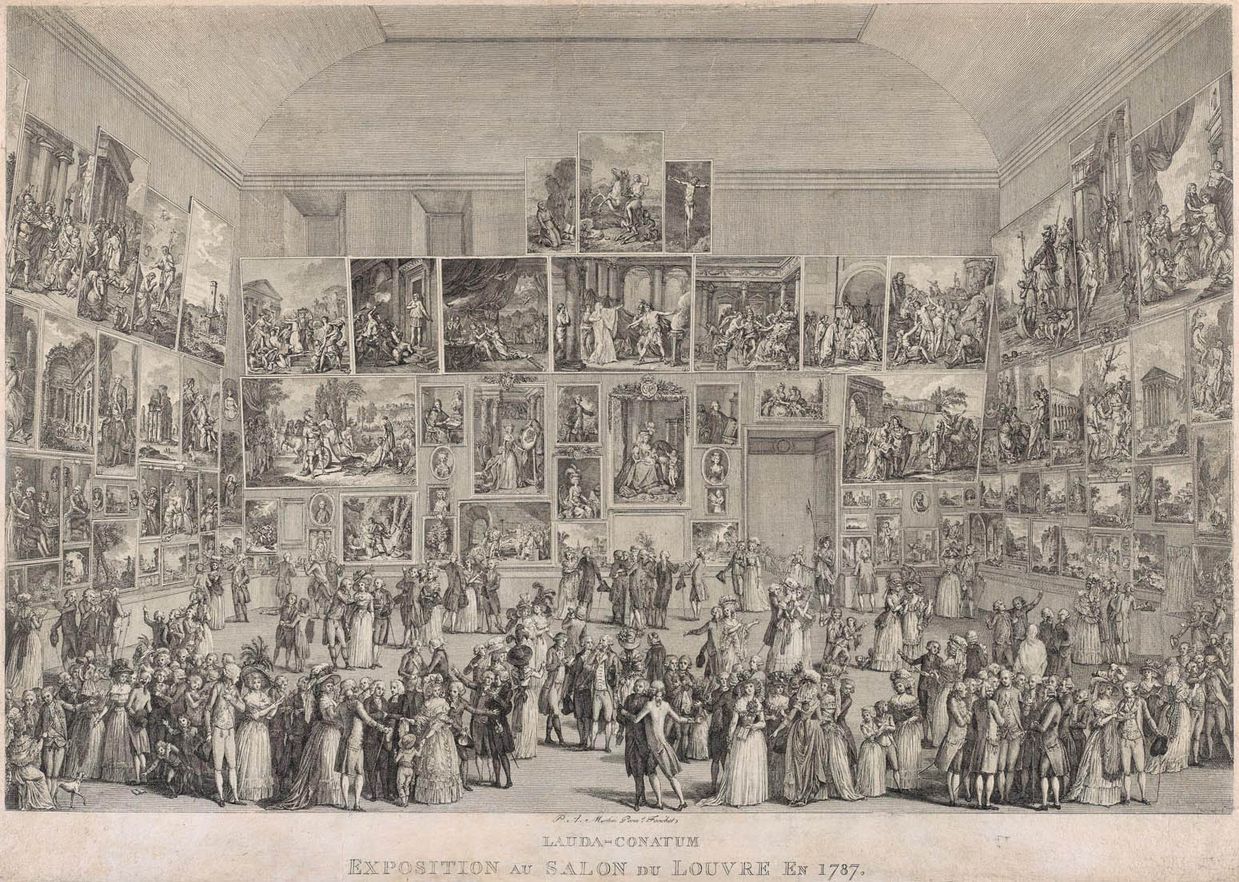This woodcut by Vasari, which served him as illustration of his Vite, shows the painter Castagno with a glowering face and wild look.
Exhibition ended
Idols & Rivals
Artists in Competition
20 September 2022
to 8 January 2023
Nowadays, competition is mainly associated with sport, the economy, evolution theory, architecture, or various types of TV contest. Ever since the days of ancient Greece, however, competition has also played an important role in the world of art.
Our exhibition shows how in antiquity, the Renaissance, and the Baroque, artists competed with one another and how, in addition, they measured themselves against ancient models. This kind of competition has brought forth some of the best-known works in the history of art.

Every Competition Needs a Jury
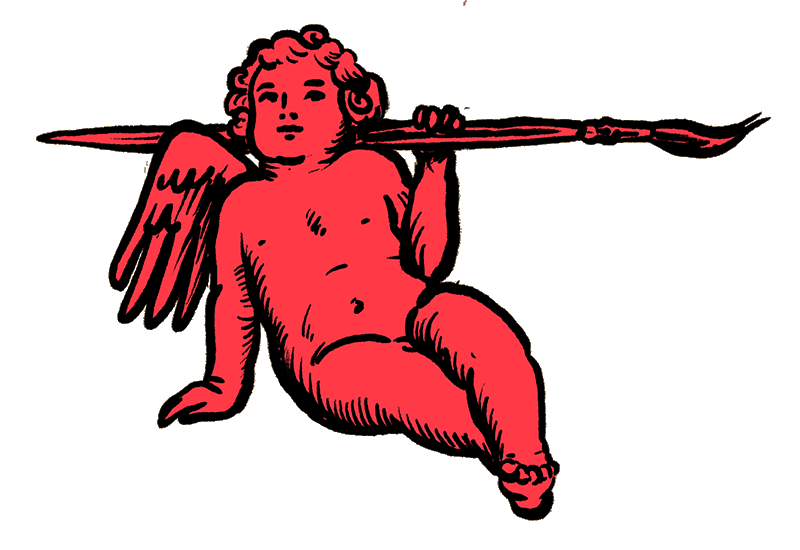
Artworks on public display have always faced judgement by their viewers.
You, too, can become a jury member and join the judging, centuries after the contest in question.
Who are the best artists, which is the best artwork? We put several pairs or groups of works up for a vote. At the bottom of the website, you will find out the current status of the voting.
Let your personal taste be your guide. Your opinion counts!
Competition in Antiquity
Phidias vs. Kresilas vs. Polykleitos
Around 430 BCE, a number of Greek sculptors made statues of a wounded Amazon for the largest temple in the ancient world, the Artemision in Ephesus. The jury was composed of the artists themselves – with the result that they all awarded themselves first place. Which of these opponents gets your vote?
A sideswipe at a colleague
Euthymides vs. Euphronios
Two rival vase painters in Athens around 500 BCE
This vase was proudly signed on the front by Euthymides, one of the finest vase-painters of the years before 500 BCE. On the backside, however, he wrote ‘as Euphronios never [would have been able to paint it]’. He thus claimed that his work was better than those of his colleague, who clearly led the field in the Athens of his day. In their sculptural quality, Euthymides’ figures indeed surpassed those of his rival.
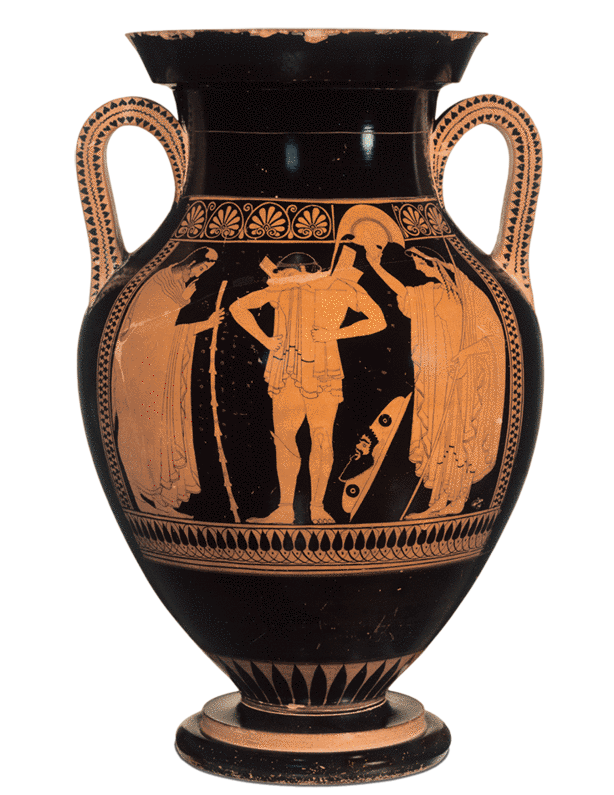

Competition in the Renaissance
Dawn of a new age
Brunelleschi vs. Ghiberti
In 1400, a competition was announced for a bronze double door at the Baptistery in Florence. While such contests were no rarity, this one is considered a classic of its kind. A jury of 34 declared the winner to be Lorenzo Ghiberti, whose composition was regarded as better balanced, not to mention its using around seven kilograms less of the valuable material. Hardly any history of Renaissance art fails to mention this event as a founding moment.
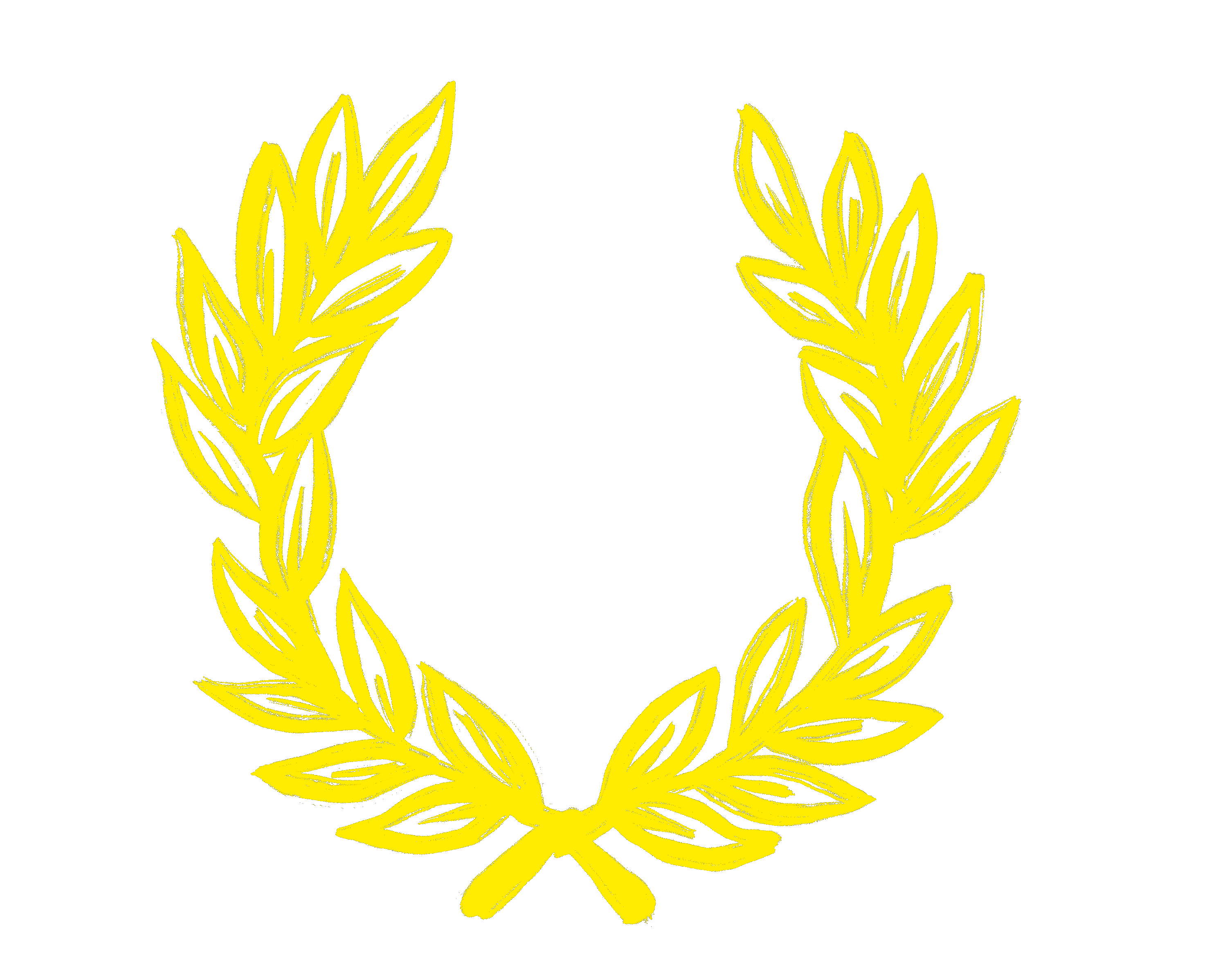
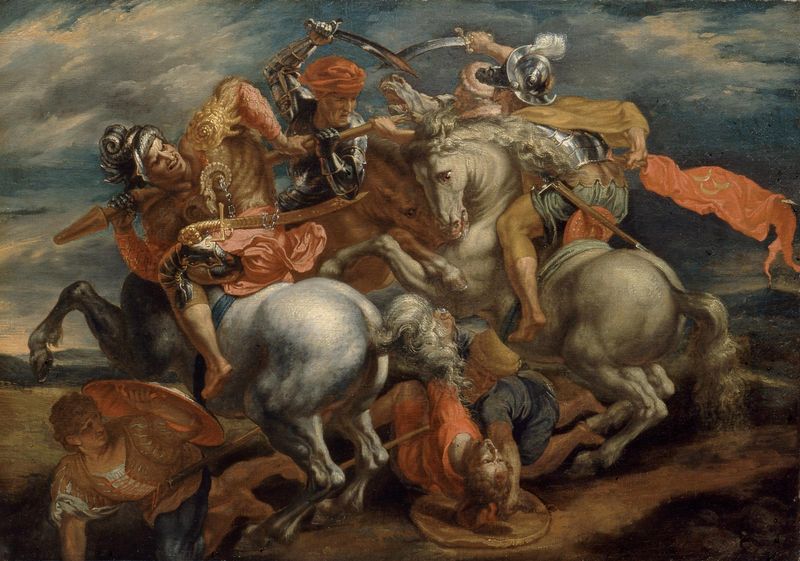

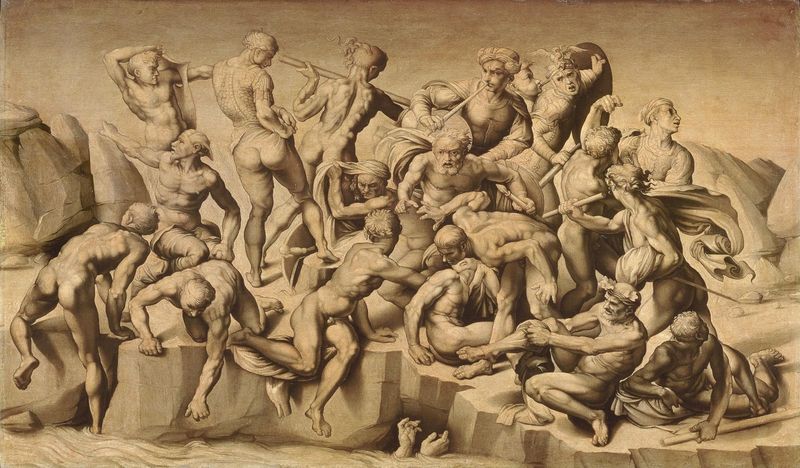
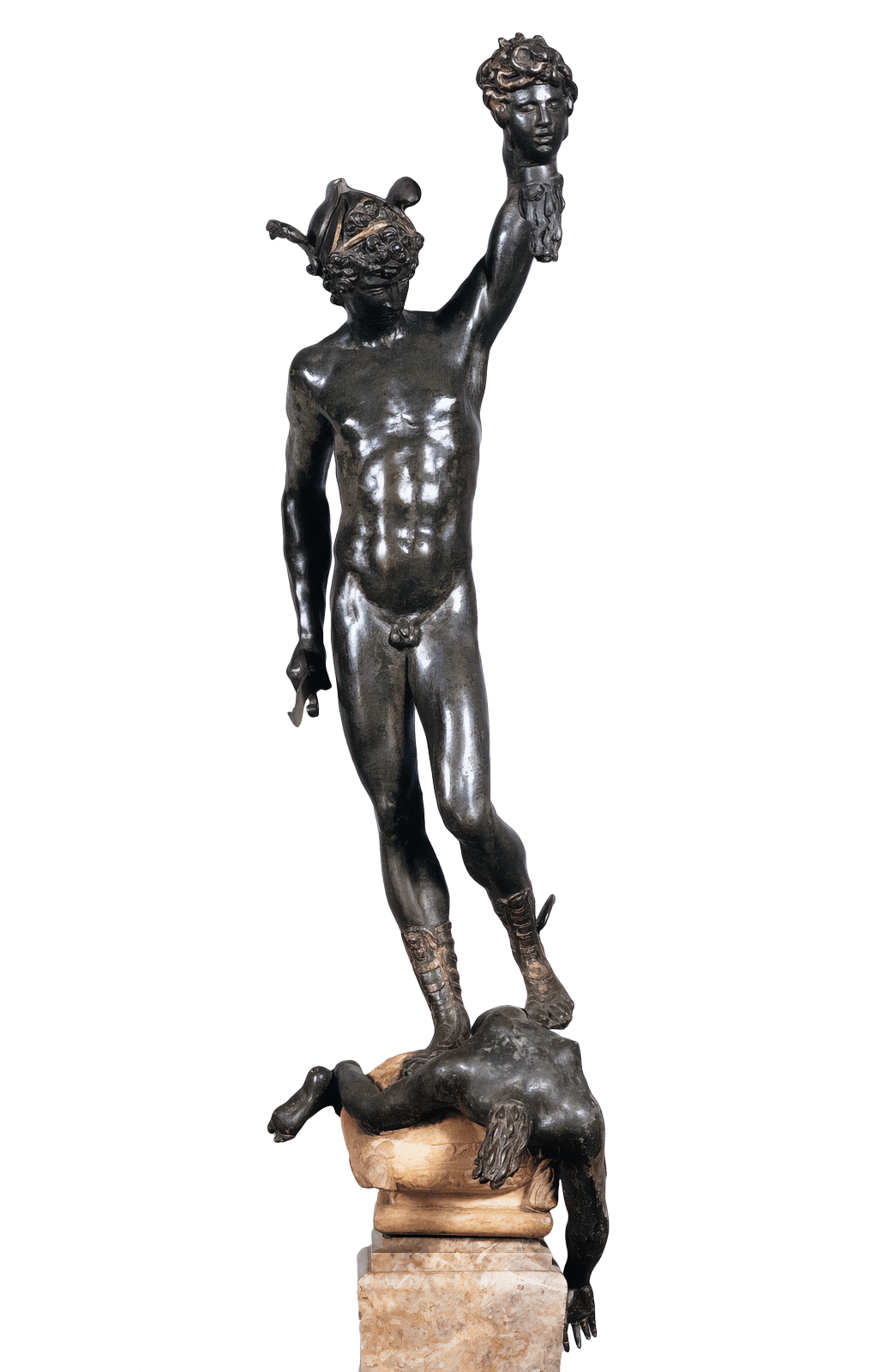
Florence: contest on the piazza
Even today, this figure transforms the Piazza della Signoria into a competitive arena. Cast with accomplished skill, it was unveiled in Florence in 1554 in immediate proximity to major works by Donatello and Michelangelo. In his autobiography, its creator the goldsmith and sculptor Benvenuto Cellini wrote of his plan to use this sculpture ‘to kill all my enemies’. He was thinking in particular of his arch-rival Bandinelli, who was represented on the square with a Hercules group.
Paragone
In 1547, the humanist Benedetto Varchi launched a survey on which art was the better. Eight artists wrote letters in response. The sculptors’ principal argument was that their works could be viewed from all sides. But Lorenzo Lotto had already shown that painters, too, could portray their subject from more than one angle. Later, Marten Jozef Geeraerts was to prove, as many had done before him, that painting could imitate sculpture better than sculpture could painting.
Professional envy
Deadly competition, destructive jealousy
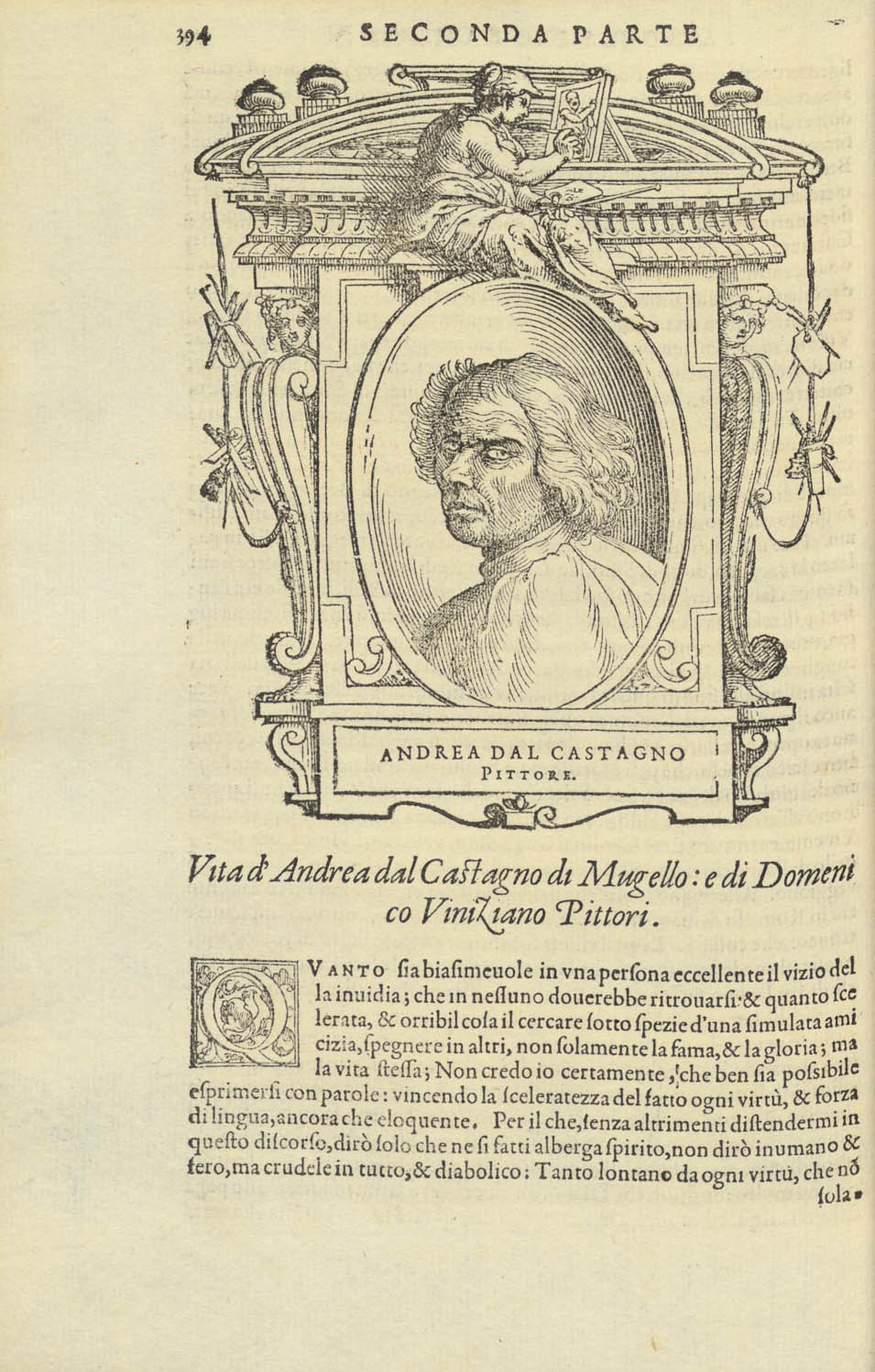
Giorgio Vasari, Portrait of Andrea del Castagno, 1568, woodcut, in Le vite de‘ piv eccellenti pittori, scvltori, e architettori … (Florence, 1568), ii, 394. Vienna, Austrian National Library © Wien, Österreichische Nationalbibliothek, BE.11.Q.42, S. 394
Andrea del Castagno’s murder of Domenico Veneziano
While artistic competition could stimulate and inspire, it could also fuel envy and malice. There are records of attempted espionage and even murder. Giorgio Vasari, for example, reports how out of envy Andrea del Castagno cunningly gained the confidence of his rival and then lured him into a hidden place and killed him. We now know that the biographer was wrongly informed. However, his narrative was passed down through the ages and del Castagno went down in history as a murderer.
But it Can Be Done Differently:
Esteem
Esteem and recognition
Sofonisba Anguissola and Lavinia Fontana
In 1578, Lavinia Fontana was asked for a small self-portrait, to be reproduced as a print and published alongside a self-portrait by Sofonisba Anguissola. The young Lavinia expressed her high regard for Sofonisba’s works by reflecting them in her own creations. In a letter, she humbly wrote that when placed alongside her own works, Sofonisba’s art ‘could display its brilliance to all the greater effect’.
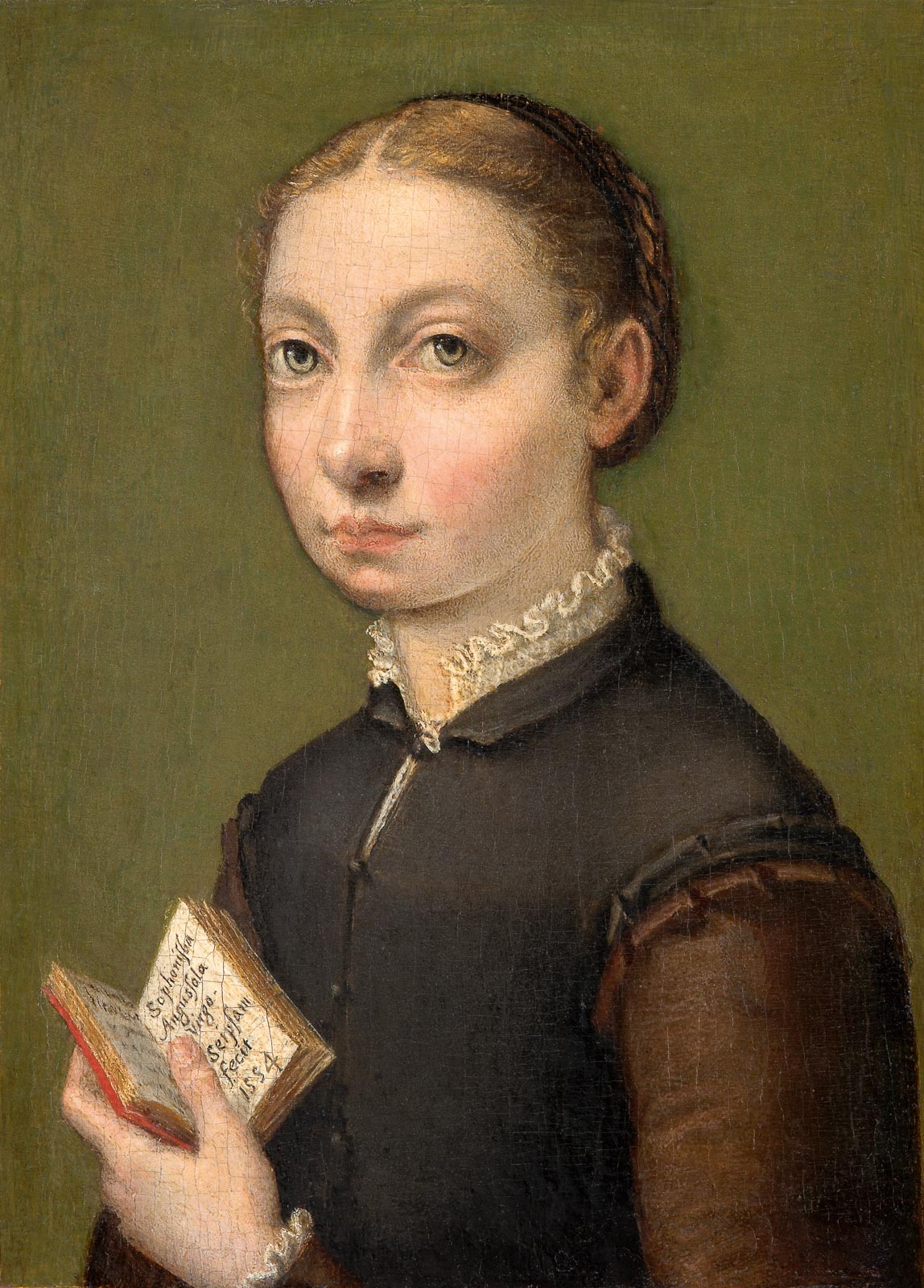
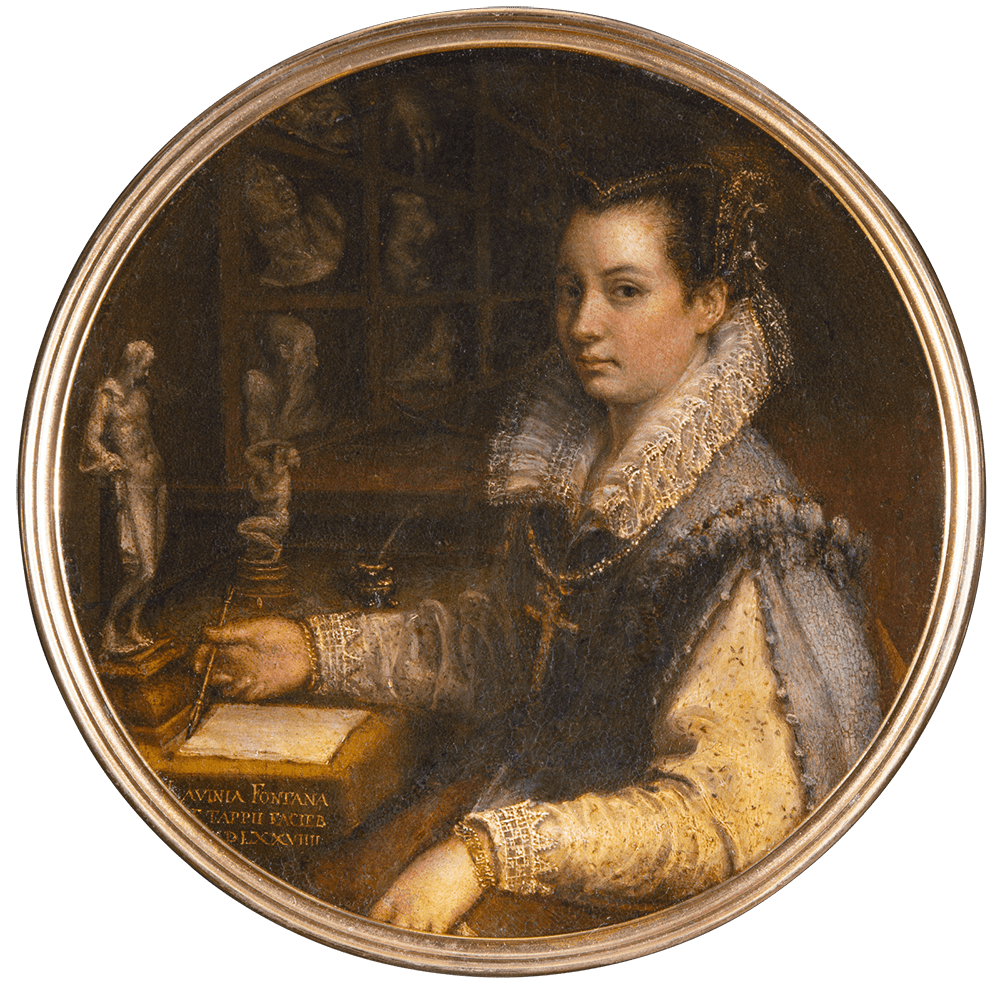
Surpassing a Model:
aemulatio and superatio
Dizzy flights
Michelangelo vs. Rubens
The artist biographer Giorgio Vasari urged later generations to ‘imitate Michelangelo in all respects’. Rubens was one of several painters who rose to this challenge. An invention of Michelangelo’s prompted him to produce more than just an imitatio: aiming rather at aemulatio (competitive imitation) and superatio (surpassing), he created a powerful new work that is rich in allusions.
Teacher and pupil
Rubens vs. van Dyck
Even as a young student, van Dyck was able to imitate the painting style of his teacher Rubens perfectly. Later, however, he went his own way and began to make his brushwork looser and freer. Which style of painting is more convincing? The teacher’s or the pupil’s?





Rivalry Unto Death
Painter as wolf to painter
Paudiss vs. Rösel von Rosenhof

This contest from the year 1666 subsequently acquired a tragic aftertaste. Joachim von Sandrart tells us that one of the competing artists, Christopher Paudiss, died only a few days later. Paudiss’s opponent was the now largely unknown animal painter Franz Rösel von Rosenhof. Did he manage to defy the odds?

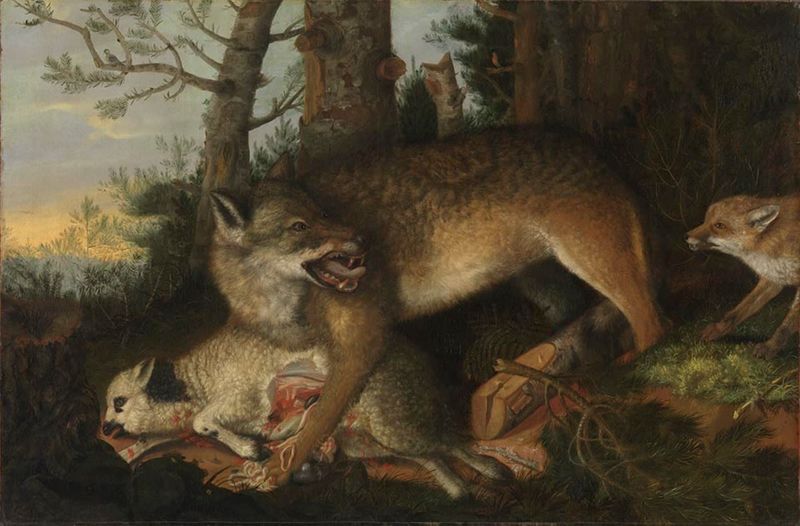

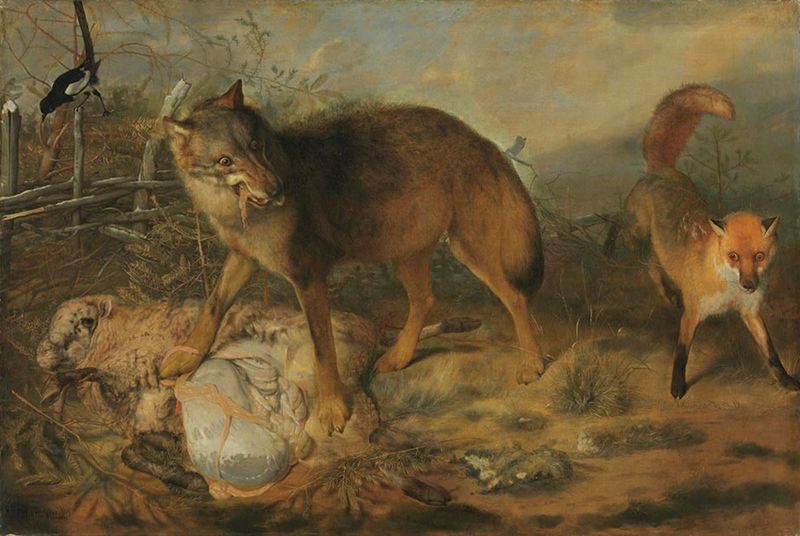
But it Can Be Done Differently:
Collaborations
Collaboration
between painters
For his Head of Medusa, Peter Paul Rubens decided to collaborate with an animal painter, Frans Synders, who contributd with the snakes. But Rubens was also competing with Leonardo and Caravaggio, who had painted famous depictions of the same subject before.
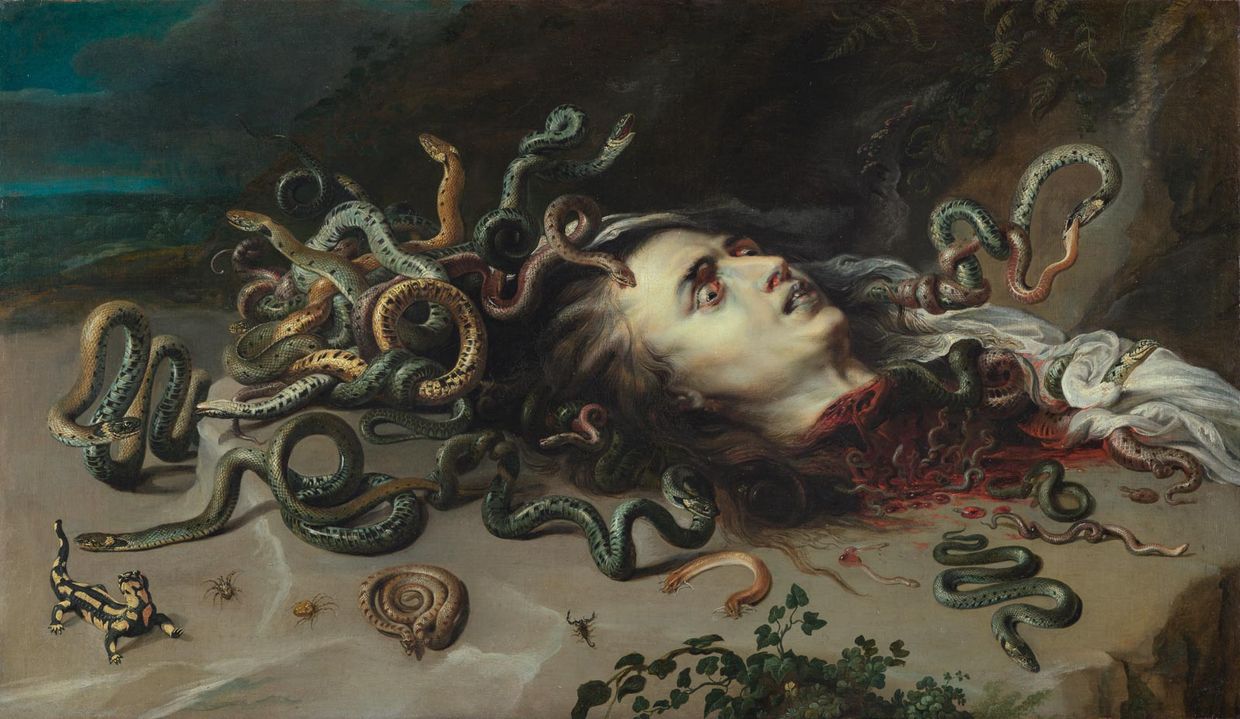
Collaboration
between a goldsmith and a gemstone-cutter
The goldsmith Jan Vermeyen and the gemstone-cutter Ottavio Miseroni collaborated on a precious covered tazza:
a masterpiece combining two branches of the decorative arts.
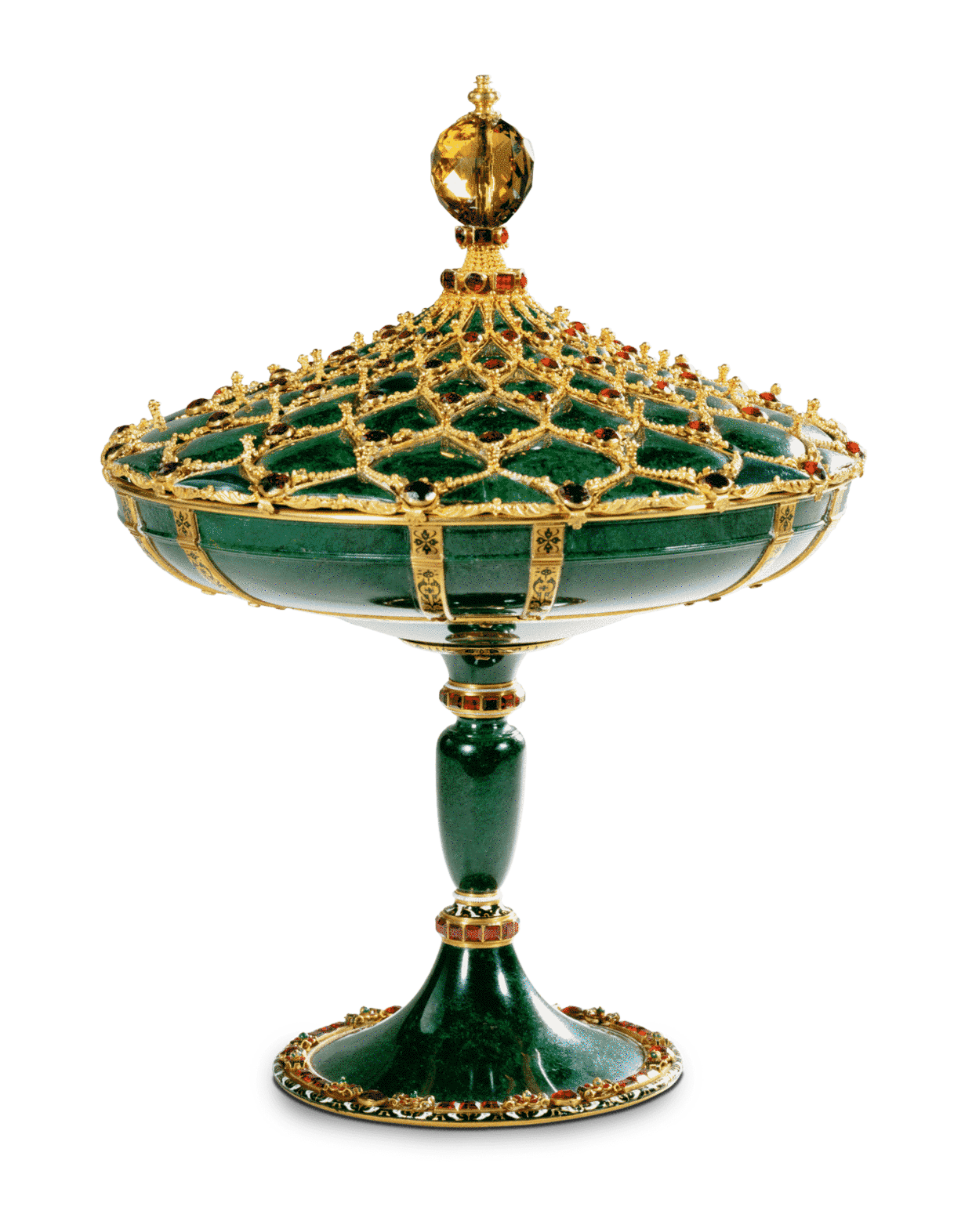
Academies and Salons
From competition to exhibition
In the seventeenth century, competitions organized by academies became a Europe-wide phenomenon, starting in Rome and Paris, later followed by Vienna. The subjects were prescribed and the winners awarded valuable prizes that also earned them fame. At the public exhibitions, also known as salons, works were shown in densely hung arrangements – a playing field for art critics and, at the same time, a lively social event.
Vying for public attention
Vernet vs. Loutherbourg
The Paris salon of 1771 exhibited so many works that the artists had to have a strategy for capturing the public’s attention – such as depicting a sinking ship or a famous person. Which of the two paintings stands out the most?


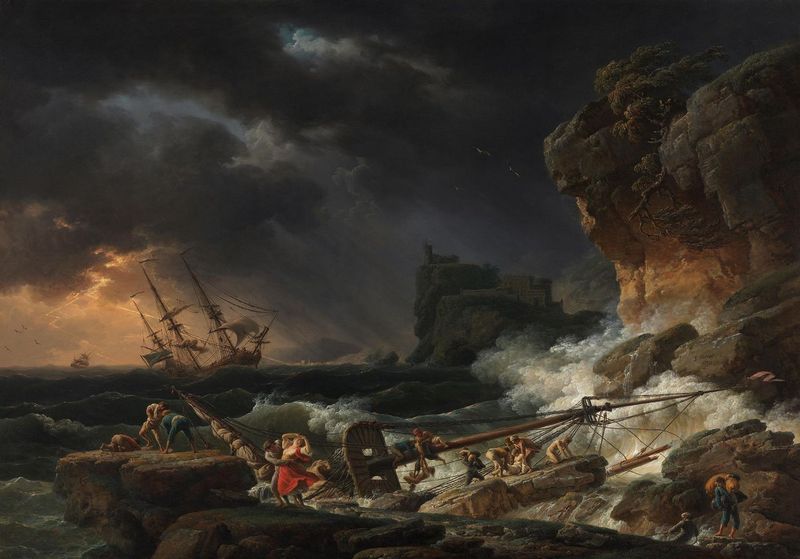

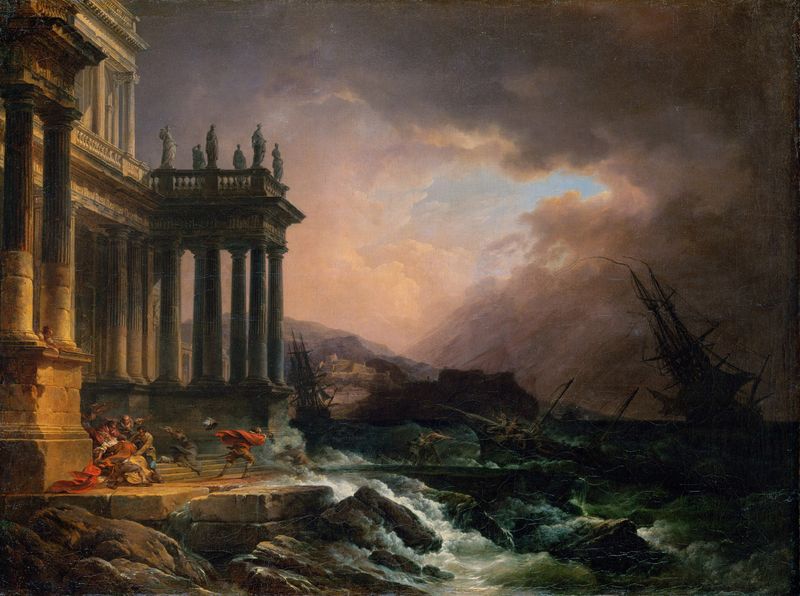
The royal academy’s grand prix
Suvée vs. David

In 1771, the French Académie royale mounted a competition – which subsequently enabled the winner to study in Rome for several years. David, then only 23 years old, had hoped to win the prize but lost out to the older painter Suvée. Rightly so?

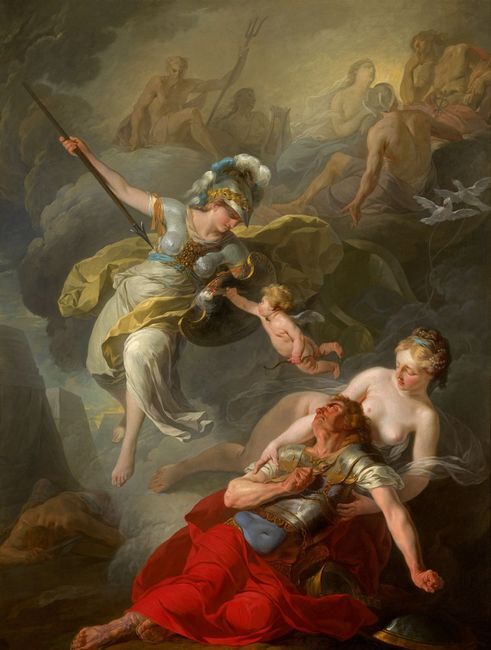

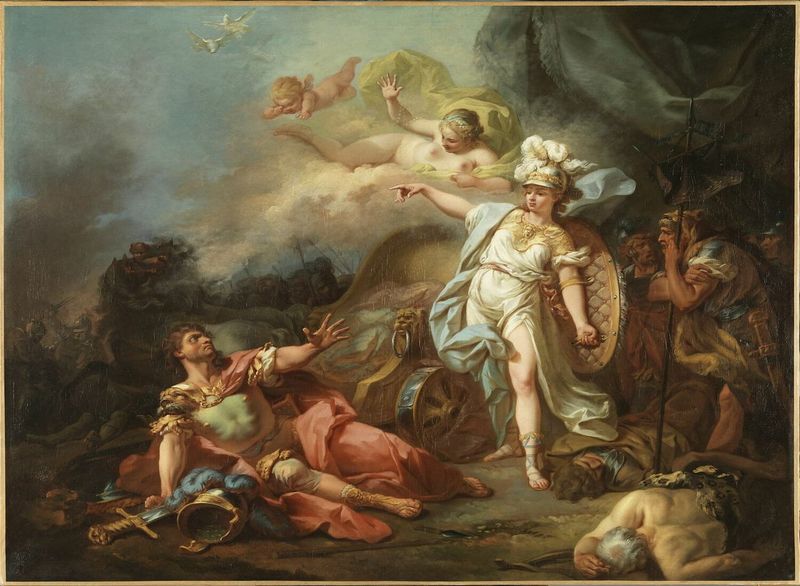
Voting Methods, Too, Have a Long History

In ancient Greece, the cradle of democracy, votes were cast with shards of pottery or pebbles.
This bowl shows men putting down stones to decide who the weapons of the fallen hero Achilles are to go to – Ajax or Odysseus?
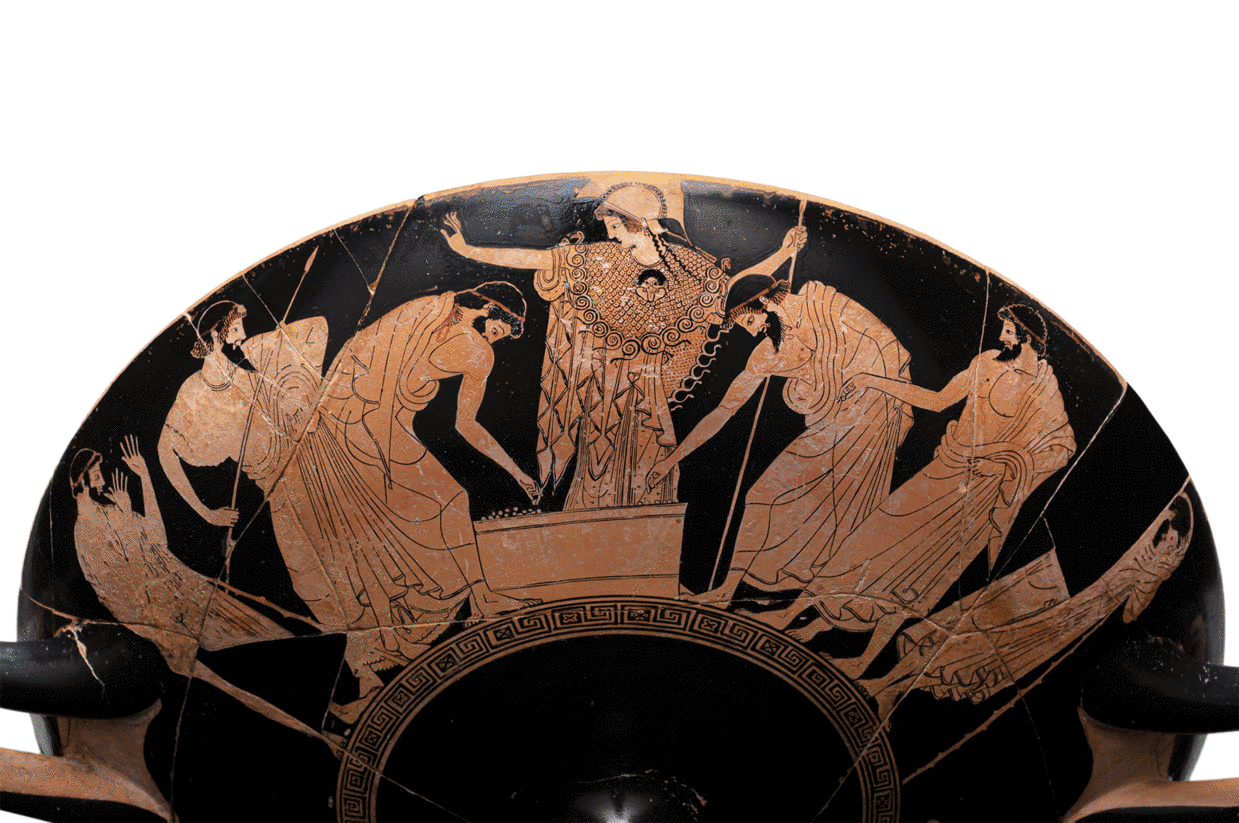
Even as late as the eighteenth century, beans were used to vote. At the Paris Academy, for example, white and black beans were used to make decisions of all kinds – from the awarding of prizes to academy admissions.
‘An exhibited picture is like a book that has been published – everyone has the right to pass judgement upon it.’
La Font De Saint-Yenne, 1747
You have voted!
Results of the audience's voting
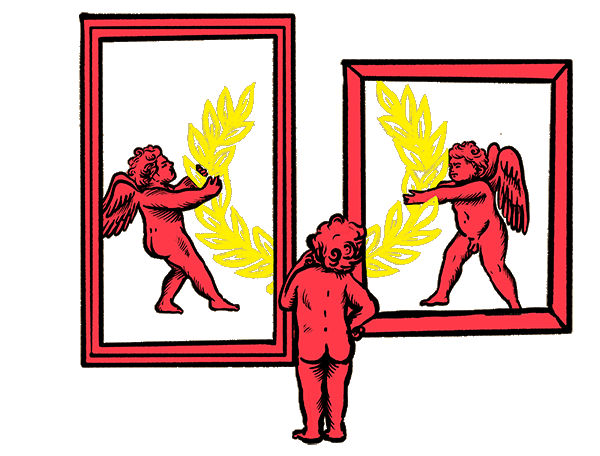
Michelangelo, Lavinia Fontana, and Anthonis van Dyck combat Titian, Sofonisba Anguissola, Peter Paul Rubens, and many others. The exhibition concept seeks, among other things, to trace numerous artistic confrontations from antiquity until around 1800 and to put the rival works of the past on display for present-day viewers to compare.
In this exhibition, some sixty loans from international collections are pitted against just as many major works from Kunsthistorisches Museum Vienna.
Works exhibited
Gold Wreath from an Athlete’s Grave
Ancient Anthedon, Regional Unity of Euboea; 2nd half of the 2nd cent. BCE–early 1st cent. BCE
Wounded Amazon (Mattei Type)
Roman copy from the 2nd half of the 2nd cent. CE after an original by Phidias 440/430 BCE
Euthymides
Attic Red-Figure Amphora: Euthymides and Euphronius, Two Rival Colleagues in Kerameikos in Ancient Athens
510/500 BCE
Jan van der Hamen y León
Still Life with Fruit and Birds
1621
Jan van Rossum
Flower Still Life with Curtain
1671
Cornelis Bisschop
Self-Portrait
1668
Suessula-Maler
Column Krater: Apollo and Marsyas
c.400 BCE
Bartholomäus Spranger
Apollo and the Muses (Fragment of a Judgement of Midas)
after 1590
Hendrick de Clerck
The Judgement of Midas
1610/15
Luca Giordano (1634–1705)
Apollo Flaying Marsyas
c.1695
Aphrodite Anadyomene
Roman copy from the 2nd half of the 2nd cent. CE after a statuette from the 1st cent. BCE
Antonio Lombardo
Venus Anadyomene
1508/16
Jodocus van Winghe
Apelles Painting Campaspe
c.1600
Valentine Green, after James Barry
Venus Rising From the Sea
1772
Raphaelle Peale
Venus Rising from the Sea – a Deception
c.1822
François Duquesnoy
Apollo and Cupid
1635/40
Georg Raphael Donner
Apollo
c.1728
Georg Raphael Donner
Mercury and Cupid
1725/26
After Filippo Brunelleschi
Sacrifice of Isaac
1401
After Lorenzo Ghiberti
Sacrifice of Isaac
1401
Antonio Pollaiuolo, here attributed
The Birth of St John the Baptist
1477/78
Benedetto da Maiano
The Birth of St John the Baptist
1477/78
Peter Paul Rubens, after Leonardo da Vinci
Fight for the Standard
c.1605
Lorenzo Zacchia, after Leonardo da Vinci
Fight for the Standard
1558
Bastiano da Sangallo, called Aristotile, after Michelangelo
The Battle of Cascina
1542
Michelangelo
Studies of a Raised Arm
c.1504
Agostino Veneziano, after Michelangelo
Five Soldiers (from The Battle of Cascina)
1524
Marcantonio Raimondi, after Michelangelo
The Climbers (from The Battle of Cascina)
1510
Benvenuto Cellini
Perseus with the Head of Medusa
Florence, 1545/9
After Giambologna
Rape of a Sabine Woman
Florence, 17th cent.
Francesco Petrarca
Sonetti, canzoni e triomphi (title page)
Venice, Pietro & Giovanni Maria de’ Nicolini da Sabbio, 1549
Giorgione
Portrait of a Young Woman (‘Laura’)
1506
Titian
Benedetto Varchi
1537/41
Benedetto Varchi
Lezzioni di M. Benedetto Varchi Accademico Fiorentino
Florence, Filippo Giunti, 1590
Giovanni Bellini
Young Woman at Her Toilet
1515
Lorenzo Lotto
Triple Portrait of a Goldsmith
1525/35
Andrea Mantegna
Abraham Sacrificing Isaac
1490/95
Georg Schweigger
The Baptism of Christ
Nuremberg, c.1645
Bartholomäus Spranger
Odysseus and Circe
1580/85
Hubert Gerhard
Mars, Venus, and Cupid
Augsburg or Munich, 1580/90
Sebastian Stoskopff
Trompe l’oeil (The Triumph of Galatea)
before 1651
Marten Jozef Geeraerts
Trompe l’oeil with Amor and Psyche Relief
1755
Frans Floris – Workshop
A Portrait of Michelangelo
c.1550
Giambologna, after Michelangelo
Notte (Night)
before 1573
Titian
Danae
after 1554
After Michelangelo
Pietà of St Peter
Rome (?), 17th cent.
Ludovico Cigoli
Pietà
1599 or shortly after
Annibale Carracci
Pietà
c.1603
After Michelangelo (Bartolomeo Ammannati?)
Moses
c.1550
Valentin de Boulogne
Moses with the Tablets
c.1628
After Michelangelo
The Abduction of Ganymede
1575/80
Peter Paul Rubens
The Abduction of Ganymede
1611/12
Titian
Girl in a Fur
c.1535
Peter Paul Rubens
Helena Fourment in a Fur Coat (‘Het Pelsken’)
1636/38
Titian
Isabella d’Este
1534/36
Peter Paul Rubens, after Titian
Isabella d’Este
1600/01
Andrea Mantegna
St Sebastian
1457/59
Giovanni Bellini
St Sebastian (recto), Head of a Man (verso)
early 1460s
Sofonisba Anguissola
Self-Portrait
1554
Lavinia Fontana
Self-Portrait
1579
Anthonis van Dyck
Self-Portrait
1615/16
Anthonis van Dyck
Self-Portrait
1616/17
Peter Paul Rubens / Anthonis van Dyck
St Ambrose and Emperor Theodosius
c.1617
Anthonis van Dyck
St Ambrose and Emperor Theodosius
1618/19
Tleson
Little-Master Cup
c.540 BCE
Giorgio Vasari (1511–1574)
Portrait of Andrea del Castagno
from: Giorgio Vasari, Le Vite De’ Piv Eccellenti Pittori, Scvltori, E Architettori […], Florenz, Giunti, 1568
Roberto Venturi
Giovanni Bellini Has Himself Portrayed by the Painter Antonello da Messina in Order to Discover the New Way of Painting in Oils
1870
Andrea Mantegna
Battle of the Sea Gods (Two Parts)
2nd half of the 15th cent.
Filippo Negroli / Giovan Battista Negroli
Medusa Shield
1550/55
Joachim von Sandrart
Minerva and Tempus Protecting the Arts and Sciences from Envy and Lies
1644
Christopher Paudiss
Wolf, Fox, and Sheep
1666
Franz Rösel von Rosenhof
Wolf, Fox, and Sheep
1666
Carlo Dolci
Allegory of Sincerity
1659/65
Luca Giordano
St Rosalia
c.1697
Gasparo de Vecchi
Construction Survey of the Palazzo Ferratini, the Cappella dei Re Magi by Bernini, and the East Wing by De Vecchio, Together with the Designs for Borromini’s Alterations and Plans for the New South and West Wings of the Collegio di Propaganda Fide
1646/47
Francesco Borromini
First Project for the Enlargement of the Cappella dei Re Magi with Underlaid Ground Plan of Bernini’s Previous Structure
Gasparo de Vecchi
Complete Ground Plan for the New South and West Wings and the Cappella dei Re Magi Designed by Francesco Borromini
1660
Christoph Lencker
Basin with Scenes from the Story of Europa
Augsburg, c.1602 (before 1606)
Anton Schweinberger, goldsmith work / carving attributed to Nikolaus Pfaff
Ewer with Seychelles Nut
Prague, 1602
Christoph Jamnitzer
Ewer and Basin Set, so-called Trionfi Set
Nuremberg, 1601/02
Paulus van Vianen
Ewer and Basin Set with Scenes from the Story of Diana
Prague, 1613
Albrecht Dürer
The Virgin and Child (Maria lactans)
1512 (?)
Daniel Fröschl
The Virgin and Child (Maria lactans) with a Self Portrait of the Young Dürer
after 1603 or 1607
Titian
Jacopo Strada
1567/68
Tintoretto
Ottavio Strada
1567
Tintoretto
Sebastiano Venier
c.1572
Tizian
The Doge Francesco Venier
1554/56
Il Cerano / Giulio Cesare Procaccini / Il Morazzone
Martyrdom of Saints Rufina and Seconda, named by Giovanni Pasta ‘The Painting by Three Artists’
1617/18
Peter Paul Rubens and Workshop
The Head of Medusa
1612/13
Jan Brueghel d. Ä.
Animal Sketches (Dogs)
c.1616
Flemish, after Peter Paul Rubens and Jan Brueghel the Elder
Diana Resting after the Hunt
17th cent.
Hendrick van Balen / Jan Brueghel the Younger
The Rape of Europa
1625/31
Pieter van Avont / Jan Brueghel the Younger
Flora in the Garden
1652
Jan Vermeyen, goldsmith work / workshop of Ottavio Miseroni, hardstone carving
Lidded Cup
Prague, 1600/05
Jobst Bürgi / hardstone carving attributed to Ottavio Miseroni
The Vienna Crystal Clock
Prague, 1622/27
Roger de Piles
Cours de Peinture par principes
Paris, Jacques Estienne, 1708
Charles-Nicolas Cochin
Competition for the Prix Caylus 1761
1761
Joseph-Benoît Suvée
Minerva Fighting Mars
1771
Jacques-Louis David
Minerva Fighting Mars
1771
Claude-Joseph Vernet (1714–1789)
Shipwreck in Stormy Seas
1770
Philippe-Jacques de Loutherbourg / Pierre-Antoine de Machy
Stormy Sea near a Harbour
1771
Joseph-Sifrède Duplessis
Christoph Willibald Gluck
1775
Jean-Antoine Houdon
Christoph Willibald Gluck
1775
Franz Anton Maulbertsch
Allegory of an Award Ceremony at the Viennese Academy During the Tenure of Wenzel Anton, Prince of Kaunitz-Rietberg
c.1787
Jean Mauger
THE CLEMENCY OF THE KING
1666
Jean Mauger / Thomas Bernard, engravers
Medal Celebrating the Founding of the Académie Royale de Peinture et de Sculpture in Paris and Rome 1667
1667
Giovanni Martino Hamerani, engraver
Prize Medal Presented by the Accademia Nazionale di San Luca in Rome
1702
Ermenegildo Hamerani / Giovanni Martino Hamerani (1646–1705), engravers
Prize Medal Presented by the Accademia Nazionale di San Luca in Rome
1707
Benedikt Richter / Matthäus Donner, engravers
Small Prize Medal for the k.k. Hofakademie der Maler, Bildhauer und Baukunst in Vienna
1731
Benedikt Richter / Matthäus Donner, engravers
Large Prize Medal Presented by the k.k. Hofakademie der Maler, Bildhauer und Baukunst in Vienna
1731
After Jean Dassier
Chain of Honour with a Medallion Showing Maria Theresa as Duchess of Milan
1763

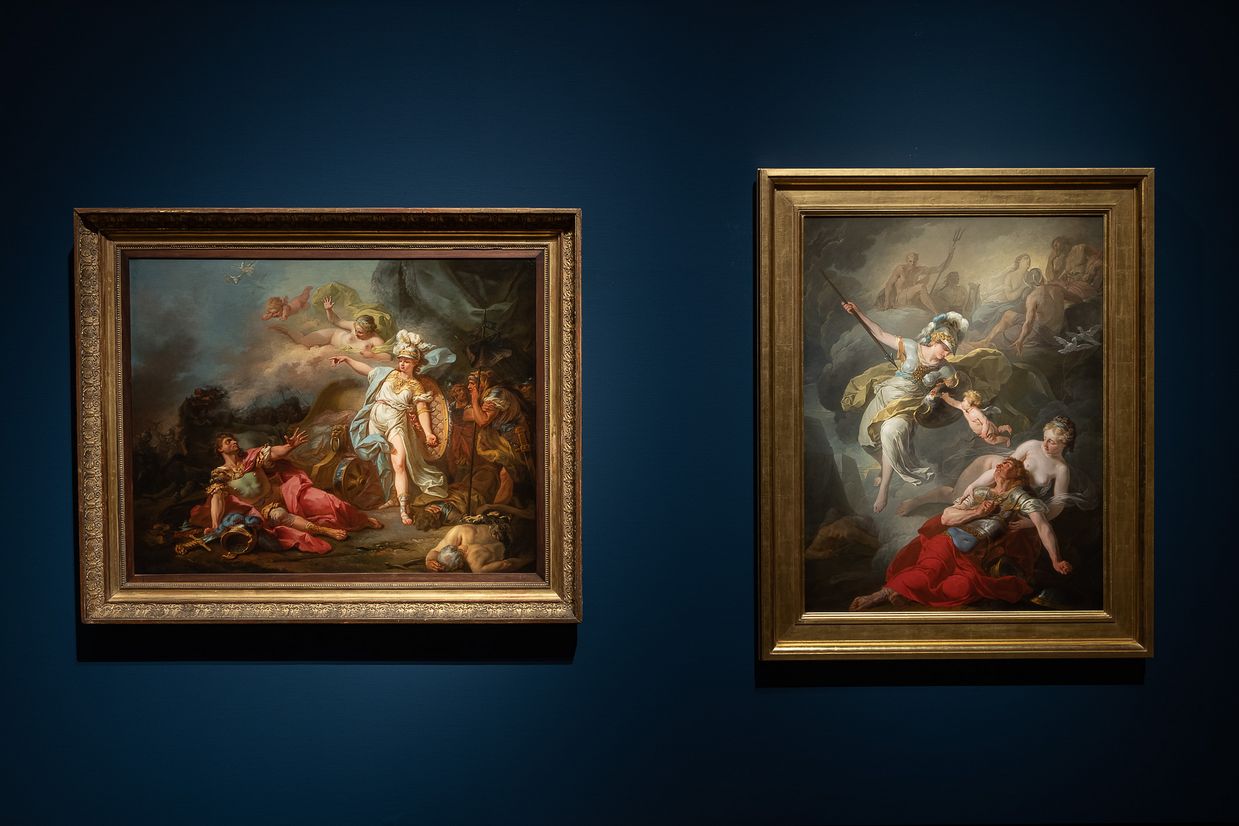
Would you like to book your own private tour?
For your family or friends, for your birthday party or company party: You can book your private tour of the special exhibition for any occasion!
For information:
T +43 1 525 24 - 5202
Mon - Fri, 9 a.m. - 12 p.m
kunstvermittlung@khm.at

Would you like to book your own private tour?
For your family or friends, for your birthday party or company party: You can book your private tour of the special exhibition for any occasion!
For information:
T +43 1 525 24 - 5202
Mon - Fri, 9 a.m. - 12 p.m
kunstvermittlung@khm.at

